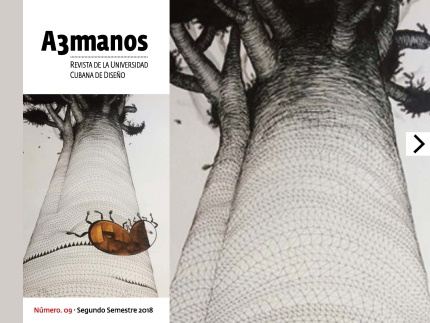Books for Alice. An approach to the illustrations on children’s books
##plugins.themes.bootstrap3.article.main##
Abstract
This essay is an invitation to reflect on the features and importance of illustrations in children’s literature, through an analysis of its origin and behavior in the western world and especially in Cuba. In addition, this article will inquire and question the scarce research on this topic and its contradictory focus on picture books.
##plugins.themes.bootstrap3.article.details##

This work is licensed under a Creative Commons Attribution-NonCommercial-ShareAlike 4.0 International License.
- Attribution — You must give appropriate credit , provide a link to the license, and indicate if changes were made . You may do so in any reasonable manner, but not in any way that suggests the licensor endorses you or your use.
- NonCommercial — You may not use the material for commercial purposes .
- No additional restrictions — You may not apply legal terms or technological measures that legally restrict others from doing anything the license permits.
- ShareAlike — If you remix, transform, or build upon the material, you must distribute your contribution under the same license as the original. NOTE: This point applies to numbers 1 to 20 of the magazine with the previous CC-BY-NC-SA 4.0 license. Does not apply to the new CC BY-NC 4.0 license from Volume 11, Number. 21 (2024).
References
Andricaín, S. (1995). En torno a la ilustración lati- noamericana de libros para niños y jóvenes. Revista Amigos del libro, 14-22. Retrieved from www.biblio- teca.org.ar
Arcenegui, J. M. (2014). La importancia de las ilus- traciones en las obras infantiles. Publicaciones Didacticas, (51). Retrieved from www.publicaciones- didacticas.com.
Ávila, C. (2018). Los libros para niños que los niños no quieren leer. El Caimán Barbudo(enero-febrero), 11.
Chomenko, H. (2018). Y no olvides seguir asomán- dote a los abismos: a propósito de la Bienal de Ilus- tración Los Puentes. Noticias Arte Cubano (febrero 2018), 6-7.
Díaz, J. Estrategias de desbordamiento en la ilustra- ción de libros infantiles. Casa de la Leitura. Retrie- ved from www.casadelaleitura.org
Durán, T. (2005, 07-07). Ilustración, comunicación, aprendizaje. Revista de Educación, extraordinario, 239-253.
Erro, A. (2000). La ilustración en la literatura infan- til. Revista de filología hispánica, 16 (3), 501-511.
Franz, J. (2018). Hermanas de intercambio y el pac- to con el lector infantil. El Caimán Barbudo(enero- febrero), 12-13.
Hoster, B & Gómez, A. (2013). Interpretación de ál- bumes ilustrados como recurso educativo para la competencia literaria y visual. Red Visual, 19, 65-76. Retrieved from http://www.redvisual.net/pdf/19/ redvisual19_06_cabo-gomez.pdf
Lartitegui, A. (2004). El nuevo concepto de libro ilus- trado. Educación y biblioteca, 16 (144), 32-34.
Lozano, M. ( 2016 ). El álbum ilustrado. Las ilustra- ciones como elemento de construcción de significa- dos. Publicaciones Didácticas, ( 71 ). Retrieved from www.publicacionesdidacticas.com
Nikolajeva, M. y Scott, C. (2003). How Picture Book Work. New York: Garland Publishing, 2001. Print.
Peña, S. y Perez, M. (2014). Diseño: «El objeto de la profesión». Revista A3 Manos. No. 2. ISDi.
Pino, C. (2017). Arte en libros: el libro ilustrado: as- pectos de su desarrollo en Cuba: Forma.
Pomares-Puig, P. Álbumes ilustrados, libros de imá- genes y cómic silente para estimular el lenguaje.
Rojas, N. (2010, enero - junio). La ilustración infan- til: abriendo una ventana hacia nuevas lecturas. Re- vista infancias imágenes, 9 (1), 43-46.
Schulevitz, U. (1996). What is a Picture Book?, Sh. Egoff, ed. et al., Only Conneet, Readings on Children's Literature, Oxford-New York, Oxford Uni- versity Press.
Villar-Arellano. (2016). El álbum ilustrado: un géne- ro en alza Monográfico: Literatura Infantil y Juvenil. Retrieved from http://www.literaturas. com/v010/ sec0812/suplemento/Articulodiciembre08_2.html
Zeegen, L. (2006). Principios de ilustración (S. Pujol, Trans.): Editorial Gustavo Gili SL.






















